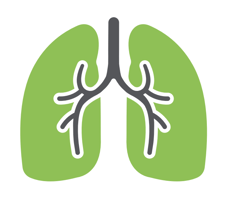It’s a fact of life: many of us will suffer from an injury that seriously affects our health at some point in our lives. According to the National Safety Council, the U.S. experienced 14.3 million injuries in 2019 alone. Others of us may have to cope with the impact of long-term illness.
For patients recovering from prolonged illnesses or injuries — strokes, fractures, or neuromuscular diseases — making the necessary adjustments to perform day-to-day self-care, regain cognitive functions, and return to work can be challenging.
Yet there is hope. Occupational therapists can perform a range of assessments and treatments to help you get back to your best.
Over the years, occupational therapy (OT) has evolved significantly. In the past, it focused on helping people get back to work after injuries. Today, OT still addresses this issue, but it has also become the most effective treatment option for patients who want to regain the ability to perform everyday tasks. By designing an individualized plan that provides a range of exercises to strengthen your body and teach you new methods of performing daily tasks, an occupational therapist can help put you back on the road to recovery.
Let's have a look at what an occupational therapist does, common conditions they treat in a rehab facility, and the benefits of using therapy exercises.
There’s a lot to consider when it comes to beginning occupational therapy but simply getting started is a crucial step toward recovery. Equip yourself with the information you need to find the best solution for you—download our eBook today.
Click a link to go directly to a specific section.

To understand how occupational therapy can benefit you, it’s good to begin with a thorough understanding of the field of occupational therapy (OT). OT covers a wide range of objectives and activities and it’s generally known as a therapy for patients recovering from physical or mental illness. The end goal is to encourage rehabilitation through the performance of day-to-day activities.
Let’s start with a clear definition:
Occupational therapy is an allied health profession using assessment and intervention to help people recovering from injuries or illnesses to participate fully in their everyday lives.
In plain language, occupational therapy helps patients maximize their ability to do the things they want and need to do regardless of their limitations. By increasing their daily function, patients gain cherished independence.
According to the American Occupational Therapy Association, services typically include an individualized evaluation, during which the client/family and occupational therapist determine the person’s goals customized intervention plan.
Many people confuse occupational therapy with physical therapy—understandable; there’s a lot of overlap there. We’ll delve into that later, but first, let’s examine the mechanics of OT.
Occupational therapists work with patients to achieve objectives through intervention techniques, stretching, and exercise to increase strength, flexibility, and mobility. For example, here are just a few of the approaches an occupational therapist may use:
Adaptive equipment is one of occupational therapists’ greatest tools. They can recommend and train patients to use equipment like reachers, specialized utensils, dressing aids, and splints. The therapist may even modify their environment to accommodate certain impairments.
Both physical and occupational play a key role in rehabilitation and recovery. The process of OT overlaps with those of physical therapy (e.g., helping patients increase strength and flexibility), but they are distinct disciplines.
Let’s take a look at how physical and occupational therapies complement each other.
Some patients need both physical therapy and occupational therapy. Both therapies aim to help patients recover from medical conditions, surgery, or injury as quickly and safely as possible. However, the approach of each school of therapy differs slightly, and so some patients require both types of therapy to get the most complete benefit.
Physical and occupational therapy have a great deal in common, including the types of patients they treat and the settings where therapy takes place. In addition, they share these qualities:
Physical therapists and occupational therapists are essentially working toward the same ends: to help patients identify goals and then use specific treatment protocols to help patients get where they want to be.
Here’s how both disciplines combine to be most effective in treatment:
Let's say a patient wants to be able to walk again after a stroke. Their physical therapist will help them address this goal by working on their strength, endurance, balance, and gait. Meanwhile, the occupational therapist will also support this objective by focusing on exercises that will be useful in daily life, such as reaching for items from a cabinet or getting in and out of bed.
In a nutshell, physical therapy focuses on the biomechanical aspects of walking, while occupational therapy focuses on the practical applications of being able to walk.
Keep in mind, however, that occupational therapy and physical therapy have somewhat different agendas. Some experts suggest that physical therapy helps to rectify impairments or limitations while occupational therapy aims to help people live with and manage their limitations. Let’s explore more about the difference between occupational therapy and other common rehabilitation therapies.
Occupational therapy may get confused with physical therapy because the two fields do share many similarities, as mentioned above. Patients who have had physical therapy may not realize that the objectives of occupational therapy tend to be broader and more holistic than those of physical therapy.
With a focus on helping patients engage in day-to-day activities, OT must take a broad view of a patient’s daily habits and routines; whereas PT tends to zero in on the patient’s ability to move their body. Specifically, physical therapy aims to improve “gross motor skills,” such as the movements of the large muscles of the arms, legs, and torso. People who struggle with whole-body movements, such as standing up, walking, running, jumping, or climbing, can use physical therapy to gain back their strength, balance, and coordination.
Occupational therapists, by contrast, concentrate more on their patients’ ability to perform self-care tasks or other important functions like working or living independently. This means that activities typically center on fine motor skills using the smaller muscles of the hands, feet, mouth and face, and on cognitive abilities.
A patient recovering from a stroke might well need both therapies: physical therapy to relearn how to stand, walk and climb stairs and occupational therapy to help them feed themselves. That same patient may require extensive speech therapy to recover from the stroke.
Often holistic treatment of a patient requires all three: physical therapy, occupational therapy, and speech therapy. They are three related disciplines in rehabilitation that work together to treat patients as a whole. For patients with injuries or medical conditions that limit their physical capabilities, a combination of the three therapies can help restore their life.
Here are some of the different activities each therapy may include, for example.
Physical therapy helps patients move from restoring the most basic mobility to progressively more challenging types of movement and physical function, with activities such as:
Occupational therapists focus on certain activities that are essential for basic survival and well-being, as well as more complex types of tasks that are important to daily life, referred to as Activities of Daily Living (ADLs), including:
OTs also train patients on Instrumental Activities of Daily Living (IADLs), the more complex activities that support daily life such as:

Occupational therapists can also teach patients compensatory strategies, techniques, or modifications to a behavior that makes it easier for patients to perform a function. For this reason, identifying adaptive equipment to use is also one of a therapist's primary functions. For instance, an occupational therapist might assess whether the patient needs an elevated toilet seat, a handheld shower, or elastic shoelaces to make dressing easier.
Crucially, occupational therapists much also teach patients about safety judgment. This might mean instructing a patient with high blood pressure to better recognize when they need to stay still after walking to make sure that they don’t feel faint.
Speech therapy, on the other hand, narrowly focuses on areas of function: swallowing and cognition. Importantly, speech therapists help patients better swallow food or drink water, making sure the water goes into the stomach and not the lungs. They may also determine whether the patient can drink liquids or if they need fluids with a nectar consistency. Speech therapists may perform investigative studies such as a FEES (fiber endoscopic esophageal study), in which they place a tube containing a tiny camera in the patient’s nose to view the throat as they swallow.
Speech therapy also helps patients that are suffering from problems with cognition. Perhaps their cognitive skills were affected by injury or a medical condition, especially conditions of aging such as dementia or Alzheimer’s.
Some of the ways speech therapists focus on cognitive issues are:
Now that you have the basics of each mode of therapy, down, let’s focus on how to get the most from your occupational therapy program—it starts with knowing how to plan for success.

It's normal to be apprehensive when starting a recovery journey, but a little preparation goes a long way toward effectively meeting your goals. Begin by knowing what to expect: first, you’ll have an occupational therapy evaluation with your therapist.
Keeping in mind that there's a diverse range of occupational therapy frameworks, let’s take a look at what a typical occupational therapy evaluation for physical dysfunction will include. Occupational therapy evaluations can range from 20 minutes to several hours. Normally, an occupational therapy evaluation includes the following steps to help your therapist assess your current condition and needs:
It’s necessary for your occupational therapist to review your medical records before the evaluation to learn about your medical condition. During the interview, you can expect the therapist to ask detailed questions to fill in any information gaps. The data required will likely cover things like age, medical history, referring physician, the reason for referral, diagnosis, and precautions.
Be sure you talk with your therapist about the details of your day-to-day life before the incident or illness that brought you in for OT. This topic is often referred to as the Prior Level of Function (PLOF) or Occupational Profile.
After that, your therapist will perform a series of standardized assessments to get more information about your general health and, importantly, how your condition impacts your daily routines. Some health indicators a therapist will evaluate might include pain, vital signs, mental status, skin health, range of motion, muscle strength, tone, coordination, and proprioception. Realize that the relevant assessments will be based on your conditions and goals, so it’s important to be able to articulate them clearly.
The nature of the assessment can vary depending on your type of referral and the environment for the assessment. One patient may need an assessment that focuses on hospital discharge planning, while another could need cognitive rehabilitation, ergonomic assessment, or return-to-work planning. The types of assessments vary as widely as the types of patients.
No matter the differences, the assessments have one thing in common: They will help your therapist understand your pre-injury status and observe how you perform functional tasks in a real-world environment. In turn, these insights can help identify specific skills that require improvement. Your therapist can then develop a collaborative treatment plan and write a report for the insurer and other healthcare providers for reimbursement.
 The information-gathering phase of the assessments will also help your occupational therapist decide if you’re a good candidate for occupational therapy. In general, they will look to see if:
The information-gathering phase of the assessments will also help your occupational therapist decide if you’re a good candidate for occupational therapy. In general, they will look to see if:
If it's determined that OT is the right solution for your condition, your therapist will collaborate with you to set goals for your treatment based on established occupational therapy frameworks. This means that all goals must meet these criteria: they should be measurable and time-bound while relating to the reason for referral.
Expect to set both long-term and short-term goals that address progress measured in smaller increments, like standing for a 5-minute period while brushing your teeth.
To get the most from your occupational therapy evaluation and subsequent treatment, it's wise to think about what you want to accomplish before the assessment and express that to your therapist. Also, be sure to request a copy of these goals after your evaluation. You’ll want to be on the same page as your therapist while working toward the same outcomes.
Lastly, your OT will create an individualized plan to help you meet the goals. This plan should include how often you'll receive OT, how long you should be getting treatment, and the strategies or occupational therapy framework that will be employed.
Let’s take a deeper dive into goal setting, as this step is the most important driver of the treatment plan.
You’ll want to make sure your therapist follows standard guidelines for goal setting to get the best result. Like many other goal-focused professions, most occupational therapists adhere to what is referred to as the SMART framework for setting goals.
"SMART” is a catchy acronym that outlines some goal features. Under this framework, a SMART goal is, by definition:
While this may seem like common sense, each quality is a significant predictor of what constitutes a good occupational therapy goal. Let’s examine some specific examples of goals that are often used.
While these goals might appear modest to someone without a physical injury or illness, their gravity to someone with impairments to independence cannot be overstated.
Accepting the need for gradual progress is foundational to successful occupational therapy treatment. Another predictor of success is how well prepared you are for navigating the relationship with your therapist—the better you are at collaborating, the better your outcome may be.
Realizing your occupational goals starts with effectively engaging with your occupational therapy team. Communication must flow smoothly from both directions. For this reason, we’ve outlined some steps you can take to get the most value from your occupational therapy activities.

If you are wondering if you could benefit from occupational therapy, you’ve come to the right place. In this chapter, we’ll look at some typical populations for which this therapy is most useful. In particular, occupational therapy can greatly benefit those coping with symptoms from the conditions listed:
Let’s examine in detail how OT can be beneficial for certain conditions.
One of the most common benefits of occupational therapy is providing work rehabilitation. After an injury in the workplace, the patient who cannot perform all the tasks he or she was previously responsible for at work will need to regain the ability to do so over time. Losing the ability to work as you used to because of an illness or injury is a profoundly disruptive life event that may affect an individual’s well-being and self-esteem.
By understanding the work environment and the worker’s current capacity to carry out the job, an OT can design interventions and then implement them in a structured environment.
Here are a few of the ways patients with a worker’s comp injury can expect occupational therapy to assist with work rehabilitation:
As we all know, the effects of a stroke can be debilitating. But there is hope, and occupational therapy can play a critical role in recovery. According to the American Stroke Association, 10 percent of stroke survivors recover nearly completely, while another 25% recover with minor impairments.
When the blood flow to your brain is interrupted by a blood clot or a blood vessel that bursts, strokes prevent oxygen and nutrients from reaching the brain. As a result, a patient may suffer paralysis on one side or both sides of the body or wrestle with speech, language, vision, or memory problems. Occupational therapy can often mitigate these effects. Stroke patients who receive occupational therapy are much less likely to deteriorate and more apt to gain the ability to perform independent activities of daily living.
Throughout a treatment course, an occupational therapist and multidisciplinary team will focus on helping the patient regain the ability to live independently, resume normal levels of activity. As the stroke patient gradually learns new skills that enable them to live more independently, they will also gain more hope, optimism, motivation and self-confidence.
For stroke patients, the benefits of occupational therapy include the following:
Occupational therapy can be an integral part of the patient’s rehabilitation after a joint replacement surgery and throughout the treatment of arthritis. People might need joint replacement surgery for various reasons. Often, surgery is needed because of arthritis, a fracture, or another medical condition.
Although the actual surgery may only take a few hours, the pain and discomfort from the new joint might last months while the patient’s muscles adjust to the new joint as they resume normal movements.
The benefits of occupational therapy are most critical after surgery. During the rehabilitation period, occupational therapists help patients who have had a joint replacement adjust to living independently post-operation. For example, patients who have had knee replacement surgery may have trouble standing, walking, or bending. Patients who have had hip replacement surgery may have trouble sitting up in bed.
Additionally, the occupational therapist’s role often involves managing arthritis through various interventions to help patients feel less pain, less fatigue, and protect their joints. Patients with arthritis may find it difficult to move the parts of their bodies that are affected by joint inflammation, the lack of movement may lead to the arthritis condition becoming worse.
For arthritis, an occupational therapist can:
Early intervention for joint replacement surgeries and arthritic conditions can help patients go on to achieve maximum functionality.
Cardiovascular diseases are pervasive in our society. In fact, it’s the leading cause of death worldwide, according to the World Health Organization. After a patient suffers from a cardiovascular disease, he or she may experience fatigue, shortness of breath, depression, anxiety, memory and concentration problems, and difficulty participating in everyday activities. These functional limitations can be emotionally distressing, but with OT, there is hope.
According to the American Heart Association, cardiac rehabilitation is a medically supervised program that consists of exercise training, education on heart-healthy living, and counseling to reduce stress and help patients become active again. Occupational therapy plays a key role in a cardiac rehabilitation program. A fundamental aspect of cardiac care is that it treats the patient holistically.
Occupational therapists can help patients with cardiovascular disease in the following ways and more:
Cardiovascular disease can result in many complications in the patient’s life, but even those with the most severe conditions can show dramatic improvement. The benefits of occupational therapy include helping patients regain participation in the activities that make them independent and productive members of society. Having the right team of experts on your side makes a big difference to a patient’s success.
 Pulmonary diseases, also known as lung diseases, encompass all of the issues with the lungs that prevent them from functioning properly. As such, pulmonary issues affect how well a person can breathe. Difficulty breathing can be caused by asthma, pneumonia, pulmonary edema, pulmonary embolism, pulmonary hypertension, and lung cancer. One of the most common pulmonary issues is chronic obstructive pulmonary disease (COPD).
Pulmonary diseases, also known as lung diseases, encompass all of the issues with the lungs that prevent them from functioning properly. As such, pulmonary issues affect how well a person can breathe. Difficulty breathing can be caused by asthma, pneumonia, pulmonary edema, pulmonary embolism, pulmonary hypertension, and lung cancer. One of the most common pulmonary issues is chronic obstructive pulmonary disease (COPD).
The good news is that patients who enroll in a pulmonary rehabilitation program can dramatically improve their capabilities and quality of life. Occupational therapy is one aspect of a comprehensive program that includes exercise, education, and support provided by a team dedicated to pulmonary rehabilitation, but the benefits of occupational therapy are many.
Pulmonary rehabilitation programs include supervised physical exercises specifically designed to improve heart and muscle strength, increase energy levels, and help patients use oxygen more efficiently.
An important component of a pulmonary rehabilitation program is occupational therapy. Problems with breathing can limit a patient’s ability to be independent and carry out everyday activities. An OT can help patients battling pulmonary issues practice strategies to reduce oxygen consumption in their activities of daily living.
The occupational therapist will teach the patient various adaptive techniques. These could include:
An OT is useful in helping patients perform activities such as doing laundry, making the bed, putting on clothes, and cooking in ways that conserve oxygen.
While most people who develop COVID-19 fully recover, a small minority of patients will experience persistent COVID symptoms for three months or longer. Known as “long COVID” or “long-haul COVID,” this condition can affect patients of all ages, and typically presents with some of the following symptoms: chest pain, trouble breathing, headaches, nausea, anxiety, depression, and fatigue. Long-haul COVID can keep patients from returning to normal life.
A COVID-19 recovery program usually involves a multidisciplinary team to deliver medical treatment, physical therapy, occupational therapy, speech therapy, and counseling. The benefits of occupational therapy to long-haul COVID patients include increased independence and autonomy.
The debilitating fatigue, loss of energy, and weakness may prevent many long-haul COVID patients from being able to perform the normal activities of daily life. Without help, patients risk ignoring the symptoms until they deplete their energy by overexerting themselves.
Occupational therapists teach patients in a COVID recovery program to conserve energy by teaching them how to develop a variety of evidence-based skills and strategies gradually.
OTs help people in COVID-19 recovery understand that recovery is a process, and, therefore, patience and persistence are going to be very important. Previously normal activities may now require planning. Occupational therapists can help patients devise ways to carry out activities without exhausting their energy reserves. This might include alternating heavier and lighter tasks or eliminating unnecessary tasks altogether.
Occupational therapists can also help with positioning. For example, long-haul COVID patients who are struggling with energy may want to find ways to sit for some tasks, like doing the laundry while sitting in a chair. Or they may choose to practice ways to support themselves, like using a reacher instead of their arms when getting something on a high shelf.
Helping patients relax between activities by using breathing techniques and good sleep habits is another critical aspect of occupational therapy. Occupational therapists may also work with patients to gradually help them return to work or find work that best suits their capabilities.
For a COVID-19 patient to achieve the best results, occupational therapists should also focus on improving a patient’s mental health and mindset, which are essential to a successful recovery process.
 People who are diagnosed with depression, bipolar disorder, schizophrenia and other psychoses, dementia, as well as developmental disorders including autism can find them so debilitating that they struggle with the normal activities of daily life. Therefore, the return to a “normal life” may take a deliberate process of recovery.
People who are diagnosed with depression, bipolar disorder, schizophrenia and other psychoses, dementia, as well as developmental disorders including autism can find them so debilitating that they struggle with the normal activities of daily life. Therefore, the return to a “normal life” may take a deliberate process of recovery.
Occupational therapy is uniquely suited to address these issues. In fact, occupational therapy originated in the mental health setting: The first occupational therapists worked with American soldiers who came back home “shell shocked” after World War I, teaching them crafts and vocational skills that would improve their morale. From there, occupational therapy continued into community health centers after the deinstitutionalization movement in the mid-20th century.
In the past most occupational therapists once worked in mental health, and although that number has decreased over the years, new opportunities are arising for OTs to play a continued and vital role in the treatment of mental health.
Medication prescribed by doctors and talk therapy may not address the significant changes to the patient’s life that their mental illness has caused. That’s where the benefits of occupational therapy come in.
In rehabilitation and pediatric settings, occupational therapists teach clients useful skills and strategies that can assist them on the road to recovery. First occupational therapists determine which activities the patient needs, and which ones are most meaningful to them.
This type of holistic approach focuses on the occupations that enable them to participate fully in life, including education, work, social activities, and leisure. In addition, therapy will focus on well-being by instilling hope, motivation, and empowerment in clients, as well as helping them build resilience.
Occupational therapists aim to address one of the most devastating effects of mental illness: loss of motivation, self-esteem, and the tendency to isolate. The isolation may lead to further negative thoughts and exacerbate conditions like depression. However, the need to do things is an essential part of being human. By building skills and adapting their environment to keep them active, OTs help patients regain a sense of accomplishment and satisfaction in being able to take care of themselves.
For example, here are some of the interventions that occupational therapists may implement with mental health patients:
No matter the illness or injury, occupational therapy can be a crucial component of a successful recovery. Enduring a setback, even a permanent one, to some of your physical abilities doesn't always have to mean you’ll have to live with insurmountable adverse effects. Help is available. The key is knowing what to look for in an occupational therapy program.

Once you’ve determined if occupational therapy could benefit you, the next step is to locate an occupational therapist near you. You can work with occupational therapists in various settings, including hospitals, clinics, rehabilitation centers, nursing homes, private practice, vocational programs, accessibility programs, and more.
It’s wise to inquire about the professional qualifications. According to the American Occupational Therapy Association, occupational therapists must complete an Accreditation Council for Occupational Therapy Education (ACOTE®)-accredited educational program offered as master’s or doctoral degrees. They also need to demonstrate entry-level practice competency through 24 weeks of mentored practice experience before sitting for the national certification exam administered by the National Board for Certification in Occupational Therapy (NBCOT®).
Beyond professional certifications, look for an occupational therapist who has experience treating patients with needs and conditions similar to yours. They should take the time to understand your goals and help you craft a plan to achieve meaningful progress.
Knowing what to expect from a program can help you make an informed decision:
Numerous studies have shown occupational therapy’s effectiveness in acute care settings. Occupational therapy as part of acute inpatient rehab serves as a complement to other services provided in acute care settings. Occupational therapy in acute care helps patients stabilize, mobilize, and experience a successful discharge from the acute care setting.
Here are eight important activities occupational therapists can help patients in the acute care setting:
With a firm understanding of what to expect, it’s time to learn how to evaluate the right occupational therapy provider.
Now that you have a better understanding of what an occupational therapy provider does, you might be wondering how to find and vet a potential occupational therapy provider.
Ask these questions to understand if the provider you are interested in is a good fit:
Once you’ve found the right provider, you may be wondering how much of the services will be covered by Medicare, Medicaid, private insurance, or worker’s compensation. Arm yourself with knowledge ahead of time so that there are no surprises later.
Even when you’ve found the right provider, there is still the issue of how you will pay for care. Your options may include Medicare, private insurance, or worker’s compensation. Just be aware that each of the pay sources for occupational therapy has its own limits and conditions. You’ll have to review your policies carefully to fully understand what’s covered, what’s not, and any steps you may need to take to get the maximum amount reimbursed.
Rather than just glimpse at the fine print, read your policies carefully. Many people have only glimpsed at the fine print of their Medicare, Medicaid, or insurance policies. Pay careful attention to any noted rules and exclusions to know exactly how much you’ll need to cover out of pocket. Here’s a list of helpful questions to examine while reviewing your policy:
It’s important to understand that pay sources have different ways of calculating how much they will pay for the benefits of occupational therapy.
At Rehab Select, we are sensitive to the fact that our patients and their families have widely different circumstances when it comes to paying for their occupational therapy. We welcome you to make an appointment with our business office to discuss your family’s financial picture, what your financial options are and the best way to pay. Our resident Medicaid expert on staff previously had a 20-year career with Medicaid before joining the team at Rehab Select. She can help you navigate how Medicare, Medicaid, worker’s compensation, and private insurance generally work. In addition, you will find helpful information in our Alabama Medicaid eBook.
Rehab Select is committed to maintaining the highest level of function with every patient. In fact, our team will work with you every step of the way to determine the best program for your needs, including the financial considerations of the program.

Your active participation in an occupational therapy evaluation will help improve the outcome— collaboration is key. Meanwhile, finding the right therapist and facility to support your rehab goals is essential to a successful recovery journey.
Ultimately, your work with an occupational therapist should be meaningful to your life with a focus on the necessary and desired activities in your life. Getting the most value from each session lies in creating a true partnership between you and your therapist. Our therapists at Rehab Select conduct thorough occupational therapy evaluations and design personalized protocols to meet our patients' needs.
At Rehab Select, occupational therapists work with a multi-disciplinary treatment team to gain a detailed picture of the patient as a whole person. While treatment schedules may differ depending on your needs, patients can often benefit from more frequent and longer sessions. For example, here at Rehab Select, patients can receive personalized one-on-one treatments up to seven days a week and up to three hours a day to accelerate the results.
Are you ready to speak with an occupational therapist about starting a plan of treatment?
Learn how Rehab Select can help with occupational needs for short-term and long-term rehabilitation by contacting us or scheduling a tour.
